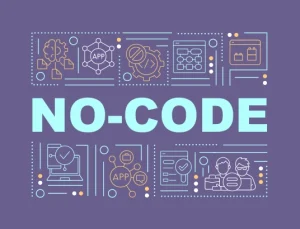- Posted on : January 29, 2021
-
- Industry : Corporate
- Type: Blog

Software testing is a crucial part of product development. Every product must go through multiple and meticulous testing before being placed in the hands of the end-user or a customer.
However, as the pace of application delivery demands have accelerated, enterprises continue to deal with a range of platform quality and reliability challenges with software testing programs, such as:
- Shorter release cycles while maintaining quality; long-running regression cycles leading to long test execution cycles. Nearly 60% of North American enterprises want production releases every two weeks or less, but only 30% of test cases are automated.
- Multiple test configurations, environments, and experiences leading to testing errors. It is hard to get an end-to-end view of test programs with so many tools, frameworks, and technologies.
- They want speed to value, and product quality, but are under pressure to deliver high-quality applications. Add multiple changes to applications with every release, and they run into the “Wall of Confusion” between agility and stability.
- They are looking for cost efficiency, but are faced with decreasing testing budgets, the high cost of test environment and execution infrastructure.
- They recognize the need for improved speed and robustness in DevSecOps and the release process, but the compressed time pressure puts test data preparation at risk.
To address these problems, we need Test Automation Frameworks, which are a set of guidelines that institutionalize the creation of test cases and optimize its execution.
Test Automation Frameworks generate test reports which capture the required artifacts for the next best action, such as type of error, automation, configuration, data, and application defect. The framework in principle should help automate the entire workflow using the DevSecOps principle
Test Automation Framework is a conceptual part of automated testing that helps testers to use resources more efficiently. A framework is defined as a set of rules or best practices that can be followed systematically to ensure the desired results.
The following frameworks are used in Automation Testing:
- Linear Scripting Framework, also referred to as the record and playback model is a scripting driven framework. The creation and execution of test scripts are done individually and in an incremental manner where every new interaction is added to the automation tests.
- Modular Testing Framework: Independent test scripts based on the modules are developed to test the software. An abstraction layer takes care of the modules to be hidden from the application during the test.
- Data-Driven Testing Framework: A separate file in tabular format is used to store both the input and the expected output results. A single driver script can execute all the test cases with multiple sets of data.
- This driver script contains navigation that spreads through the program, covering both readings of data files and logging of test status information.
- Furthermore, equivalence partitioning and boundary value analysis help create data-driven tests that lead to rather high code coverage while keeping the data sets small.
- Keyword Driven Testing Framework: An application-independent framework uses data tables and keywords to explain the actions to be performed on the application under test. This is also referred to as a keyword-driven test automation framework for web-based applications and can be stated as an extension of a data-driven testing framework.
- Hybrid Testing Framework: The combination of modular, data-driven, and keyword test automation frameworks based on the combination of many types of end-to-end testing approaches.
- Test-Driven Development Framework (TDD): Uses automated unit tests to drive the design of software and separates it from any dependencies.
- TDD defines use cases, increases the speed of tests,e and improves the confidence that the system meets the requirements; in addition to making sure that it is working adequately compared to traditional testing.
- Behavior Driven Development Framework (BDD): Tests are based on system behavior. Testers can create use cases in simple English language helping non-technical people to analyze and understand the tests quickly.
- Automated testing tool for software such as FitNesse, a behavior-driven development framework is built around decision tables.
Testing frameworks are centered around helping design test cases with better coverages.
- Deriving test cases directly from a requirement specification or black box test design technique.
- Boundary Value Analysis BVA software testing techniques
- Equivalence Partitioning EP
- Decision Table Testing
- State Transition Diagrams
- Use Case Testing
- Deriving test cases directly from the structure of a component or system:
- Statement Coverage
- Branch Coverage
- Path Coverage
- LCSAJ Testing
- Deriving test cases based on tester's experience on similar systems or testers intuition:
- Error Guessing
- Exploratory Testing
Test coverages help identify test conditions that are otherwise difficult to recognize.
These challenges can be avoided by adopting the right framework and using testing techniques to ensure better coverages. However, today test cases can be made predictable, by an understanding of the code and the entire SDLC.
This is accomplished by starting from the requirement gathering phase until the end state of incidence in production.
Create “breadcrumbs” that allow you to identify every part of the application, from critical functions to dependencies; understand correlations, important vs. non-important parts; used vs. most used. Study historical data, which helps to determine areas that require attention and the level of test coverages needed.
Based on these “breadcrumbs”, predictability allows you to project/predict what will happen if changes are being made to certain areas of the applications. This will help in predicting "builds" as outcomes. For example, if the model was a success and if not, then what are the reasons for its failure. Once the frameworks are equipped with an accurate, predictable model, companies can plan better, save time, and cost, and go to market faster.
In conclusion, it is safe to say software testing frameworks can be instrumental in helping enterprises achieve better productivity.
Watch this space for the next installment as we talk about shifting left with automation testing.








